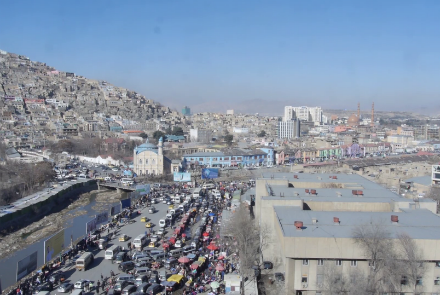Endemic violence in Afghanistan continues to be fueled by serious societal divisions, The United States Department of State has said in its report on Human Rights Practices for 2016.
The report sets out what is termed “most significant human rights problems in Afghanistan” as the main cause of the widespread violence in the country.
This includes:
• indiscriminate attacks on civilians by armed insurgent groups;
• armed insurgent groups’ killings of persons affiliated with the government;
• torture and abuse of detainees by government forces;
• widespread disregard for the rule of law and little accountability for those who committed human rights abuses; and
• targeted violence and endemic societal discrimination against women and girls.
The report says that ethnic tensions between various groups continued to result in conflict and killings.
“Societal discrimination against Shia Hazaras continued along class, race, and religious lines in the form of extortion of money through illegal taxation, forced recruitment and forced labor, physical abuse, and detention,” the report says.
The report says that according to NGOs, the government frequently assigned Hazara ANP officers to symbolic positions with little authority within the Ministry of Interior. NGOs also reported Hazara ANSF officers were more likely than non-Hazara officers to be posted to insecure areas of the country.
The US report adds Sikhs and Hindus faced discrimination, including unequal access to government jobs and harassment in school, as well as verbal and physical abuse in public places. According to the Sikh and Hindu Council of Afghanistan, there were approximately 900 members of the Sikh and Hindu community in the country.
The report says while media reported independently throughout the year, often openly criticizing the government, full press freedoms were lacking.
At times authorities used pressure, regulations, and threats to silence critics, the report says.
“Politicians, security officials, and others in positions of power arrested, threatened, or harassed journalists because of their coverage. Freedom of speech and an independent media were even more constrained at the provincial level, where many media outlets had links to specific personalities or political parties, to include former mujahedin military leaders who owned many of the broadcasting stations and print media and influenced their content,” the report adds.
In February, after the president issued a decree to implement current media laws and strengthen freedom of expression, the executive created a committee to investigate cases of violence against journalists. The committee met multiple times in the first half of the year and identified 432 cases eligible for investigation. The committee sent the cases to the appropriate government institutions associated with the violations for investigation, including the Ministry of Interior and NDS forces.
As of September, none of the government institutions had started an investigation or provided a response to the committee, the report mentions.
According to the report, girls under age 18 continue to be at risk for honor killings for perceived sexual relations outside of marriage, running away, not accepting a forced marriage, or being a victim of sexual assault.
The report says although pornography is a crime, child pornography is not specifically identified under the law. Exploiting a child for sexual purposes, often associated with bacha baazi, was widespread, although some aspects of this practice are separate crimes under the penal code.
The report indicates that the Law on Prohibition of Children’s Recruitment in the Military became effective last year but despite that there were reports about children used in military and were recruited by Taliban as well as a number of pro-government commanders.

